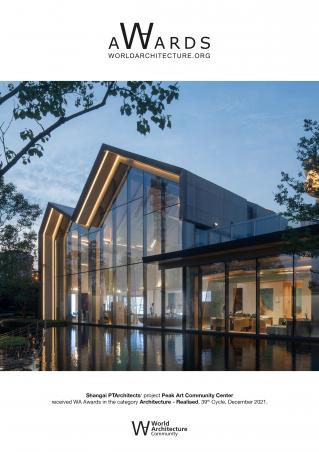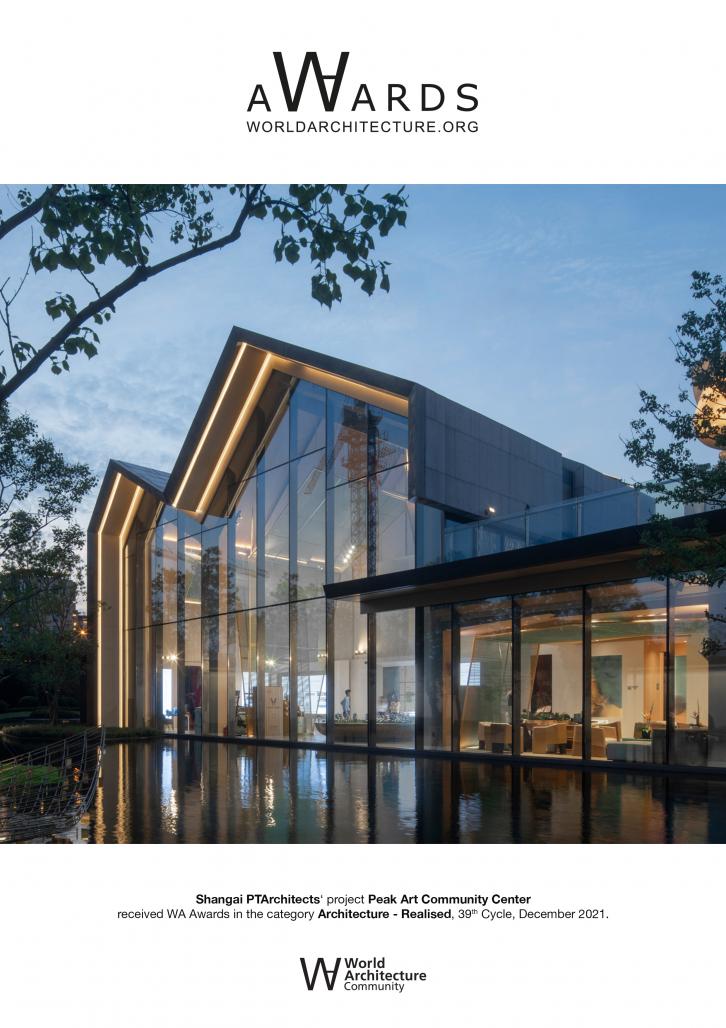Situated in Xushuguan Town, Suzhou, the project is surrounded by old neighborhoods and undeveloped land, with a noisy and desolate environment. The site is located at a crossroads, with a depth of about 35 meters and a length of about 55 meters. Xushuguan Town has been prosperous since ancient times and was founded in the Qin Dynasty with a history of more than 2,000 years.
On the site, we noticed that Xushuguan's profound cultural and historical heritage and prosperity in the old days. However, in the development and construction of modern cities, the traces of the Xushuguan history and culture are gradually dissipating. Accordingly, we hope to use modern design techniques and materials to extend the cultural and historical lineage of Xushuguan and create a modern community center available to interpret its traditional spatial context.
Because it is a relatively confined triangular site, the design draws on the Suzhou Garden path to create a sense of spatial hierarchy and playfulness, with the intention of achieving the effect of the small to reflect the large. The buildings are arranged along the long side of the north side as far as possible to leave space for the landscape site; the entrance and the corridor are arranged in an enclosed layout, which shields the noisy and undesirable factors to be developed outside the site and keep the internal space pure. The enclosed veranda, along the urban interface, adopts the translucent U-shaped glass in construction to achieve "ambiguous" communication between the inside and outside of the space.
As for the architectural form, we extracted the sloping roof from the local traditional architecture. Between two consecutive sloping roofs and one independent sloping roof, the space is linked by a section of flat roof, forming a simple and staggered folded facade profile. It is staggered in height according to function and sight lines. For materials, we adopted stone curtain wall on the gable wall and roof to strengthen the unity sense of the folding line and use a large glass curtain wall to incorporate the courtyard landscape into the indoor view and achieve indoor-outdoor interaction, presenting a poetic penetration.
In the traditional architecture of Suzhou and Xushuguan, black bricks are the main material for walls, and in Suzhou gardens, there are also openwork treatments to achieve the effect of borrowing scenery and spatial interaction. For the Peak Art project, the wall surface is also partially treated with hollowed out black bricks. Pearl blue and hollowed out black bricks are close in tone, and the matte surface treatment of pearl blue stone echoes and sets off the rougher surface texture of bricks, echoing the local traditional architectural tones and textures with modern materials and techniques.
Hopefully, Peak Art can evoke the heritage and revival of the deep historical and cultural heritage of Xushuguan Old Town, as well as its urban memory, realizing the renewal of the urban interface with a garden-style layout and a modern approach to the facade form and bringing warmth and harmony to the neighborhoods.
2020
2021
Site Area: 690 square meters
Chief Designer: Reng Xiangyi, Hu Qiao
Design Team: Xia Dacang, Ru Si, Yu Chen, Jingyu, Hu Hongyi, Li Yanli, Chen Bin, Wu Dinglong, Hou Xianwu, Sun Xin, Yang Xue
Peak Art Community Center by Shanghai PTArchitects in China won the WA Award Cycle 39. Please find below the WA Award poster for this project.

Downloaded 0 times.
















